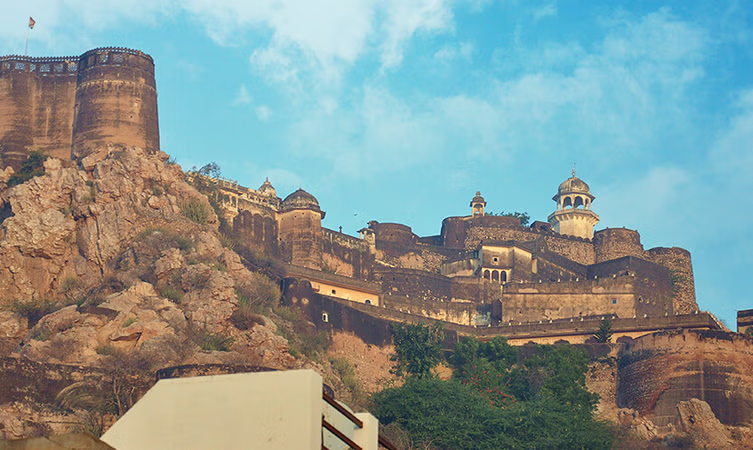Gugor Fort, nestled in the Baran district of Rajasthan, India, is a lesser-known but historically significant edifice that whispers tales of Rajput valor and medieval architectural prowess. Situated on a hill near Gugor town, close to the banks of the Parvan River, the fort offers a tranquil escape and panoramic views of the surrounding natural beauty.
Historical Significance:
The history of Gugor Fort is believed to stretch back approximately 800 years. It was strategically constructed by the Kheechi rulers, a prominent Rajput clan, primarily to defend against raids from the “Hadas,” another powerful clan in the nearby region. For a significant period of about 400 years, Gugor served as a crucial capital for the Kheechi rulers. However, as they sought a more central and suitable location, the capital was eventually shifted to Raghogarh. Following this transfer, Gugor became part of the Thikana of Chhabra, leading to its present-day designation as Chhabra Gugor.
The fort has witnessed numerous historical events and is steeped in local legends. One poignant tale recounts the ‘Jauhar‘ (mass self-immolation) performed by the queens of the Kheechi rulers. According to this legend, after a Mughal attack, the queens, rather than face capture and dishonor, bravely jumped into the deep waters of the Parvati River, a spot now known as Ranidah (Queen’s Pond). This act of sacrifice underscores the fierce pride and honor of the Rajput women.
Architectural Features:
Gugor Fort is a testament to Rajasthani medieval architecture, designed for defense and royal living. The fort is broadly divided into three parts. While specific details about each section are now somewhat obscured by time and neglect, historical accounts suggest that one part housed the royal family of the Kheechi rulers, another accommodated the army and its cavalry.
Despite its current state of disrepair, the fort still showcases massive and strong walls, indicative of its robust defensive capabilities. Within its precincts, one can find the ruins of palaces, ancient water tanks (tanks built to store water), and temples, offering glimpses into the daily life and religious practices of its former inhabitants. Interestingly, the fort also contains a mosque where Namaz is still offered, highlighting a unique example of Hindu-Muslim unity within the historical structure. The presence of ancient chhatris (cenotaphs) and chess platforms also points to the cultural and recreational aspects of life within the fort walls.
Current State and Visitor Experience:
Today, Gugor Fort stands in a somewhat dilapidated condition, yearning for better preservation and maintenance. Despite this, it remains an appealing destination for history enthusiasts and those seeking a less crowded, authentic experience of Rajasthan’s heritage. The fort’s remote location adds to its allure, providing a serene environment for exploration. Visitors can take a rocky hike to reach the fort, offering a unique adventure. The best time to visit is during the winter months (October to March) when the weather is pleasant for outdoor exploration.
